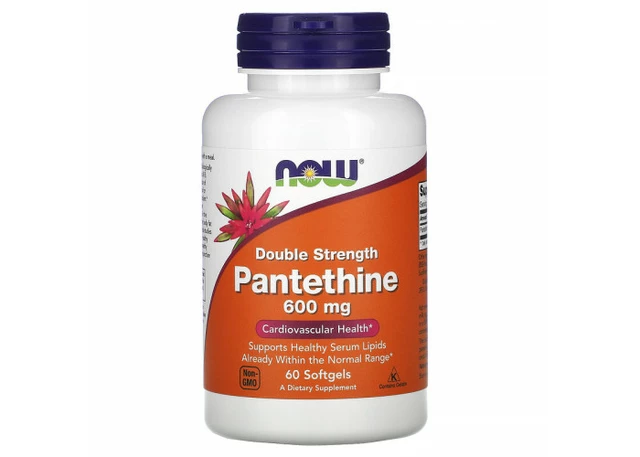 6
May,2023
6
May,2023
Understanding Ezetimibe: What is it and how does it work?
Ezetimibe is a prescription medication that is commonly used in the management of high cholesterol levels. This drug works by inhibiting the absorption of cholesterol in the small intestine. By doing so, it helps to reduce the overall amount of cholesterol circulating in the bloodstream. In turn, this can help to lower the risk of developing heart disease, stroke, and other cardiovascular complications.
It is important to note that Ezetimibe is not a statin, which is another class of cholesterol-lowering medications. While statins work by reducing the production of cholesterol in the liver, Ezetimibe focuses on reducing the absorption of cholesterol from the diet. As a result, it is often prescribed alongside statins for patients who need additional cholesterol-lowering support.
Who can benefit from taking Ezetimibe?
Ezetimibe is typically prescribed for individuals who have been diagnosed with high cholesterol levels, particularly those with high levels of low-density lipoprotein (LDL) cholesterol, also known as "bad" cholesterol. It can be prescribed as a standalone treatment or in combination with other cholesterol-lowering medications, such as statins.
Additionally, Ezetimibe may be prescribed for patients who are unable to take statins due to allergies, side effects, or other contraindications. It can also be beneficial for individuals with familial hypercholesterolemia, a genetic condition that leads to high cholesterol levels and an increased risk of heart disease.
How should I take Ezetimibe?
Ezetimibe is usually taken once daily, with or without food. It is important to follow your healthcare provider's instructions on how and when to take this medication. Make sure to take it at the same time every day to maintain consistent levels of the drug in your body.
While taking Ezetimibe, it is essential to continue following a cholesterol-lowering diet, exercise regularly, and maintain a healthy weight. These lifestyle changes can help to further reduce your cholesterol levels and optimize the effectiveness of the medication.
What are the potential side effects of Ezetimibe?
As with any medication, there are potential side effects associated with taking Ezetimibe. Some common side effects include:
- Headache
- Diarrhea
- Abdominal pain
- Muscle aches
Most side effects are mild and tend to resolve on their own. However, if you experience any severe or persistent side effects, it is important to contact your healthcare provider immediately. They can help to determine if a dosage adjustment or alternative treatment may be necessary.
Can I take Ezetimibe with other medications?
It is important to inform your healthcare provider of all medications, including prescription, over-the-counter, and herbal products, that you are currently taking. Some medications may interact with Ezetimibe, potentially affecting its effectiveness or increasing the risk of side effects.
For example, certain cholesterol-lowering medications, such as fibrates, may increase the risk of muscle-related side effects when taken alongside Ezetimibe. Additionally, some medications, like blood thinners, may require dosage adjustments when taken with Ezetimibe. Your healthcare provider can help to determine if any medication adjustments are necessary while taking this cholesterol-lowering drug.
What should I do if I miss a dose of Ezetimibe?
If you forget to take a dose of Ezetimibe, take it as soon as you remember. However, if it is almost time for your next dose, skip the missed dose and continue with your regular dosing schedule. Do not take a double dose to make up for the missed one, as this can increase the risk of side effects.
If you are unsure about what to do after missing a dose, consult your healthcare provider for guidance. They can help to ensure that you are taking the medication correctly to achieve optimal cholesterol-lowering results.
How long will I need to take Ezetimibe?
The duration of treatment with Ezetimibe can vary depending on your individual needs and response to the medication. In many cases, it is necessary to take cholesterol-lowering medications like Ezetimibe long-term to effectively manage high cholesterol levels and reduce the risk of cardiovascular complications.
It is crucial to continue taking Ezetimibe as prescribed by your healthcare provider, even if you feel well and your cholesterol levels have improved. Stopping the medication without medical advice can lead to a rebound in cholesterol levels and an increased risk of heart disease and stroke.
What should I expect during my treatment with Ezetimibe?
While taking Ezetimibe, your healthcare provider will likely schedule regular follow-up appointments and blood tests to monitor your cholesterol levels and ensure that the medication is working effectively. They may also assess your overall cardiovascular risk and make adjustments to your treatment plan as needed.
It is essential to keep all of your healthcare appointments and communicate any concerns or side effects you may be experiencing. By working closely with your healthcare provider, you can help to optimize your cholesterol management and reduce your risk of developing heart disease and other cardiovascular complications.






Ezetimibe offers a distinct mechanism compared to statins, targeting intestinal cholesterol absorption. This means it can be paired with a statin to achieve additive LDL reduction, especially in patients who have not reached goals on statins alone. Clinical guidelines often place it as a second‑line option when statin intolerance arises or when additional lowering is needed. The drug’s safety profile is generally favorable, with most adverse events being mild gastrointestinal complaints. Headaches and occasional diarrhea are reported, but they rarely necessitate discontinuation. Because it does not act on hepatic cholesterol synthesis, the risk of liver enzyme elevation is minimal. However, practitioners should remain vigilant for muscle‑related symptoms when ezetimibe is combined with fibrates. The dosing is simple-once daily, with or without food-making adherence easier for many patients. Lifestyle interventions such as a low‑saturated‑fat diet and regular aerobic exercise still play a crucial role alongside medication. Patients with familial hypercholesterolemia often benefit from the added effect, as genetic LDL elevation can be stubborn. Insurance coverage can be a hurdle, but many formularies include ezetimibe as a generic, reducing out‑of‑pocket costs. When monitoring therapy, clinicians typically check lipid panels after six to eight weeks to assess response. If LDL reduction is insufficient, dose adjustment is not an option, but adding a PCSK9 inhibitor may be considered. It is also important to educate patients not to double‑dose after a missed pill, as the drug’s half‑life does not support catch‑up dosing. Overall, ezetimibe represents a valuable tool in the cholesterol‑management arsenal when used thoughtfully and in concert with broader heart‑healthy measures.
Patients who are eligible for statin therapy should not be diverted to ezetimibe without clear clinical justification.
Yet the blanket recommendation overlooks nuanced cases where statin intolerance is genuine. The drama lies not in the drug itself but in the patient’s lived experience of side effects. By dismissing ezetimibe outright, we risk abandoning those who could benefit from its unique action. A reserved stance acknowledges the complexity without inflating the debate.
I appreciate the thorough overview; it captures both the practicality and the caveats of ezetimibe therapy. In my practice, I’ve found the once‑daily regimen especially helpful for patients struggling with pill burden. Pairing it with clear lifestyle guidance often yields the best outcomes, as the drug alone isn’t a silver bullet. Monitoring lipid panels at the recommended interval provides a feedback loop that keeps patients engaged. When side effects arise, they’re usually mild, but a prompt conversation can prevent unnecessary discontinuation. Insurance hurdles can be mitigated by checking generic availability early in the prescribing process. Ultimately, a collaborative approach between clinician and patient maximizes the benefits of this medication.
For anyone starting ezetimibe, remember that consistency is key-take it at the same time each day. Pairing the medication with modest dietary tweaks can amplify its effect without feeling restrictive. If you miss a dose, simply resume your regular schedule rather than doubling up. Keep your follow‑up appointments; they’re an opportunity to fine‑tune the regimen together. A steady, patient‑centered plan often leads to the most sustainable cholesterol improvements.